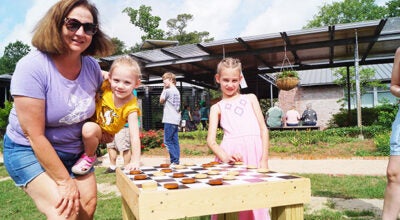And now you Know: They did not drain the swamp, they filled the marsh
Published 1:18 pm Monday, October 16, 2017
By Mike Louviere
The Orange Leader
One hundred and nine years ago, downtown Orange was nothing like it is today. Where there are now acres of concrete and large buildings, in those days there was marsh.
J.W. Link, general manager of the Miller-Link Lumber Company was serving as chairman of the Marsh Filling Committee. Link reported to the Orange Daily Leader that he had negotiated with the Bowers-Southern Dredging Company of Galveston to send Dredge No. 7 to Orange from Port Arthur. Work had started on raising the elevation of areas around the main business district of 1908 Orange. The dredge Sandow had been working, but progress was slow because the dredge was only capable of pumping 800 yards of sand from the river bottom per hour. Marsh needed to be filled along with sinkholes, and streets needed to be brought up to a grade that would alleviate the frequent flooding of the streets along the river.
Dredge No. 7 had a 20 inch pump, compared to the eight inch pump of the Sandow, it was capable of pumping 4,000 yards of sand per hour, about five times the capacity of the Sandow.
Captain Chris Harms and his tug, Katherine, would be the leader of three tugs to bring the new dredge to Orange. Two tugs would tow the dredge; the third would tow the string of pontoons needed to support the pipe the sand would flow through.
Once in place, the dredge would need 200 feet of pipe to throw the sand the distance needed to fill the low areas. The first area to be filled would be the Anderson property adjoining the post office on Fifth Street. The next areas would be the Hart and Sholars lots; then sand would be thrown to the back of the First National Bank building. After those areas were filled, the sand throwing would move to the Brown property south of the railroad track on Front Street, thence to the county property around the courthouse and Methodist Church. The last areas filled would be around the I.O.O.F. Hall on Fourth Street and other low spots in that area. Streets running through the area that were below grade would be raised.
C.S. Corrigan was the engineer from Bowers-Southern that had done the surveying, made measurements, and laid out the stakes. Some areas only needed a few inches, others nearly six feet. It was estimated that the sand throwing would take from six weeks to two months and require about 75,000 yards of sand from the river bottom.
It was a huge and expensive undertaking for the time.
The city leaders knew that the area needed to be filled so that Orange could expand.
Over the following decades, several retail businesses would locate in the filled areas; a new post office would be built on Fourth Street. Sabine Supply, the large hardware, houseware, and sporting goods store would locate on the corner of Fourth and Front Streets.
After Sabine Supply left the building, it became a bowling alley with a restaurant. When that business closed, it was purchased for use by Lamar. It became the first building downtown that would expand into Lamar State College—Orange.
In spite of having gone through many changes in the last century the core of that building remains one of the few buildings from the early days of Orange.
“And now you know”





